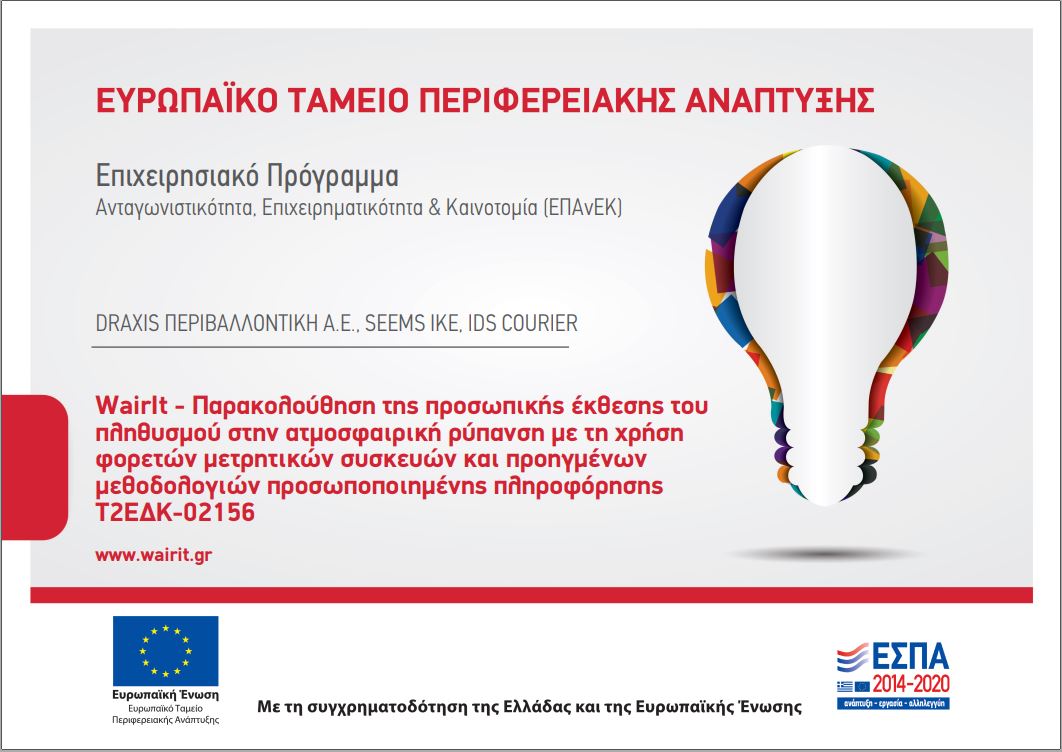
The WairIt project aims to optimize existing techniques for measuring citizens' personal exposure to urban air pollution using innovative wearables, advanced data integration technologies, and environmental indicator algorithms. The information collected will be readily available to those who carry the wearables through a mobile app, and to all stakeholders through an online platform.

As part of the project, the solution will be piloted in Thessaloniki by employees of the courier company IDS. This pilot application will lead, among other things, to the mapping of urban pollution for main roads in high spatial resolution. At the same time, WairIt's solution will help protect workers' health, thereby reducing the need for health benefits and minimizing lost working hours due to environmental-related illnesses.
Although invisible, air pollution has adverse impacts on human health, not only on susceptible individuals but also on the general public. In the EU air pollution is responsible for more than 1.000 premature deaths on average every day, while studies in Greece show that approximately 15.000 citizens die prematurely every year due to air pollution. Although their a common understanding of the universal nature of air pollution, measurements of outdoor air pollution are not easily accessible by citizens. Even for cities where these kinds of measurements exist, they represent only the air quality of a wide area and they cannot depict the personal exposure of each individual to air pollution and the respective impacts on their health.
This need is even more imperative for specific groups of people who either are more susceptible to environmental conditions (e.g. asthmatics) or are exposed to polluted air, such as courier drivers. Indicatively, according to recent studies, courier drivers who drive in a city center for 74 minutes every day inhale the same amount of air pollutants as those they would inhale if they smoked 980 cigarettes annually (van der Zee et al., 2016), with all the respective consequences to their health.
The traditional methodologies of air quality monitoring are based on ground-based monitoring networks and include several shortcomings, with the most important one being the insufficient number of inappropriately located monitoring stations that fail to depict the personal exposure of each individual to air pollution. Air quality modeling is believed to be a good substitute for ubiquitous air quality monitoring, due to its ability to detect both small- and large-scale air pollution episodes. Both air quality models and ground-based stations fail to detect differences in air pollution levels between nearby areas, while even at a distance of a few meters the outdoor air quality may be very different.
The project WairIt will improve the current methodologies for monitoring individuals’ exposure to outdoor air pollution with the use of innovative wearable sensors, advanced techniques of data integration, and methodologies of estimation of personalized air quality indices. The collected data will be made available to the individuals who carry the wearables through a mobile application, and to all the interesting stakeholders through a web platform. During the project, the integrated solution will be pilot tested in Thessaloniki with courier drivers of the company IDS courier. This pilot project is expected to result also in urban air quality mapping in an unprecedented high spatial resolution for the Greek region.
SEEMS participates in the project by designing and developing a real-time wearable measurement system with low power consumption and high reliability.
More info: https://wairit.gr/



